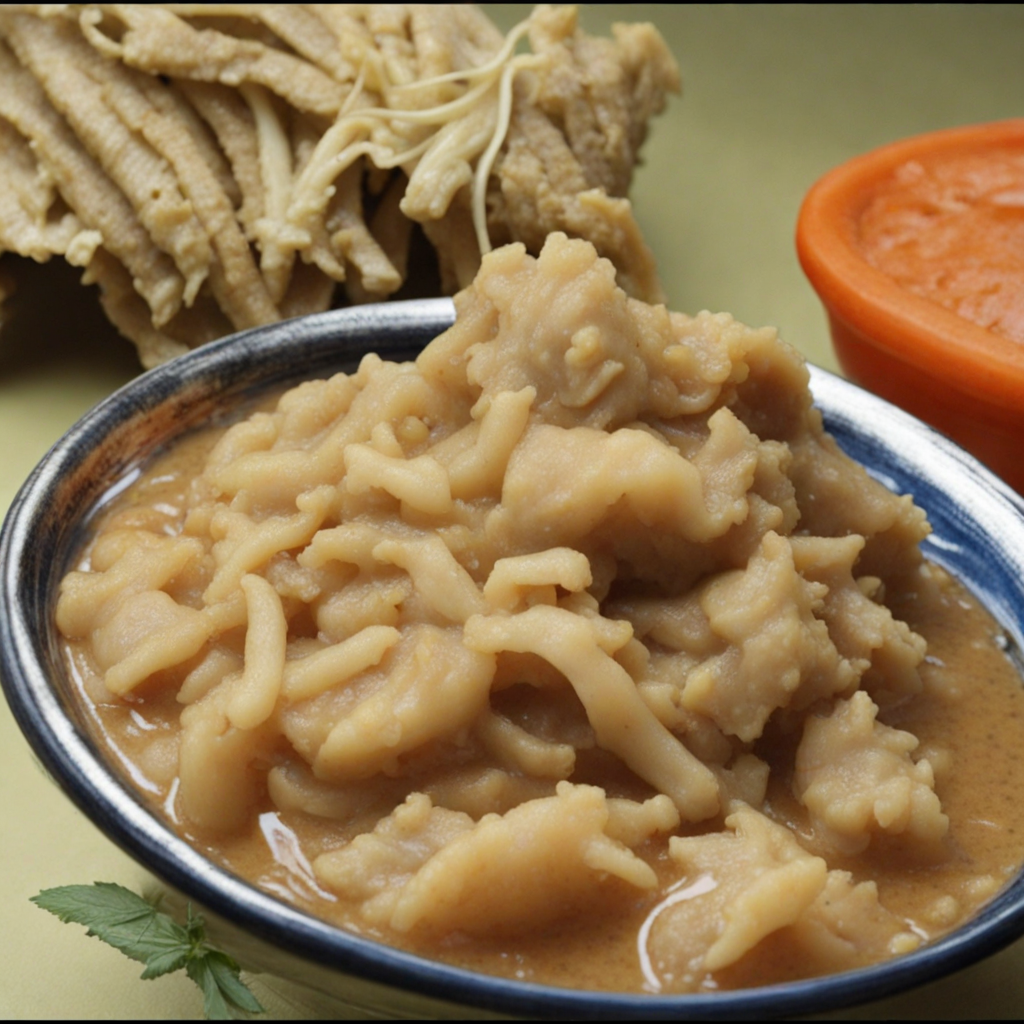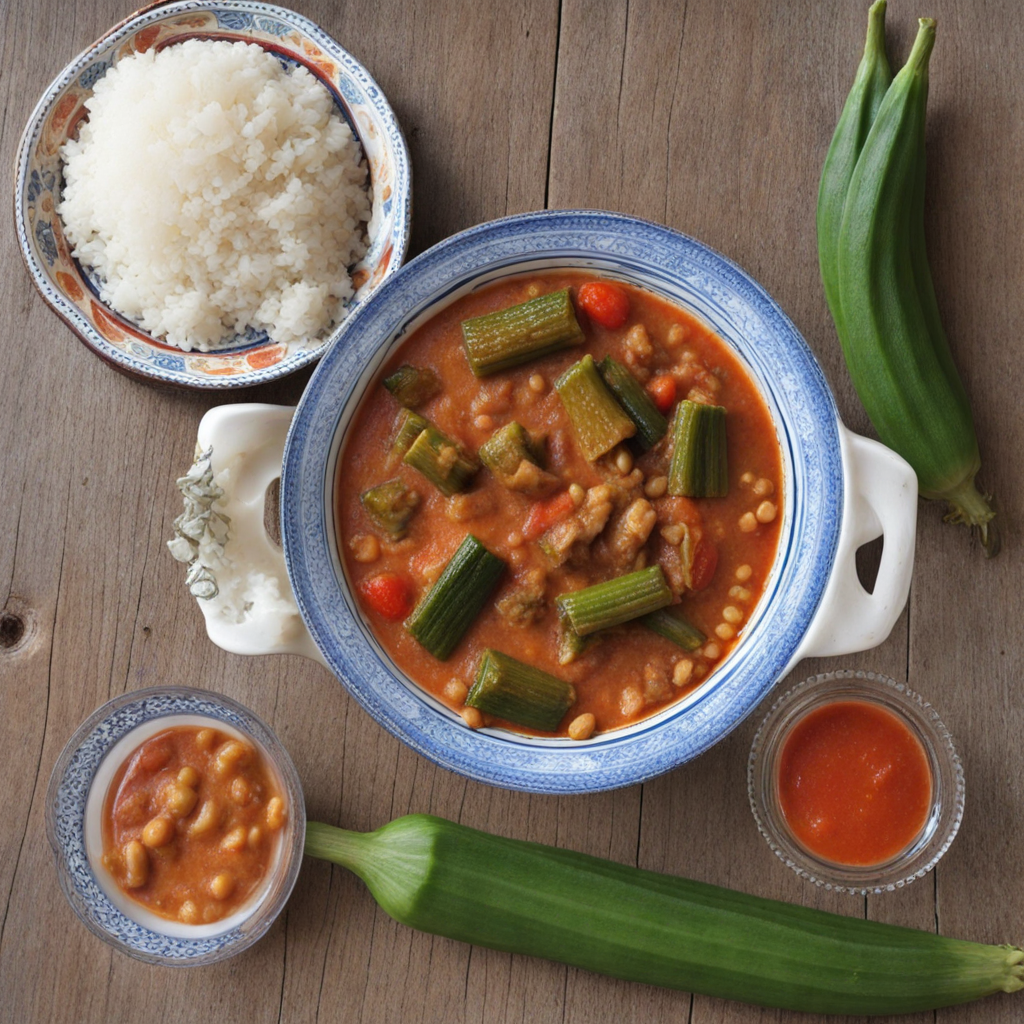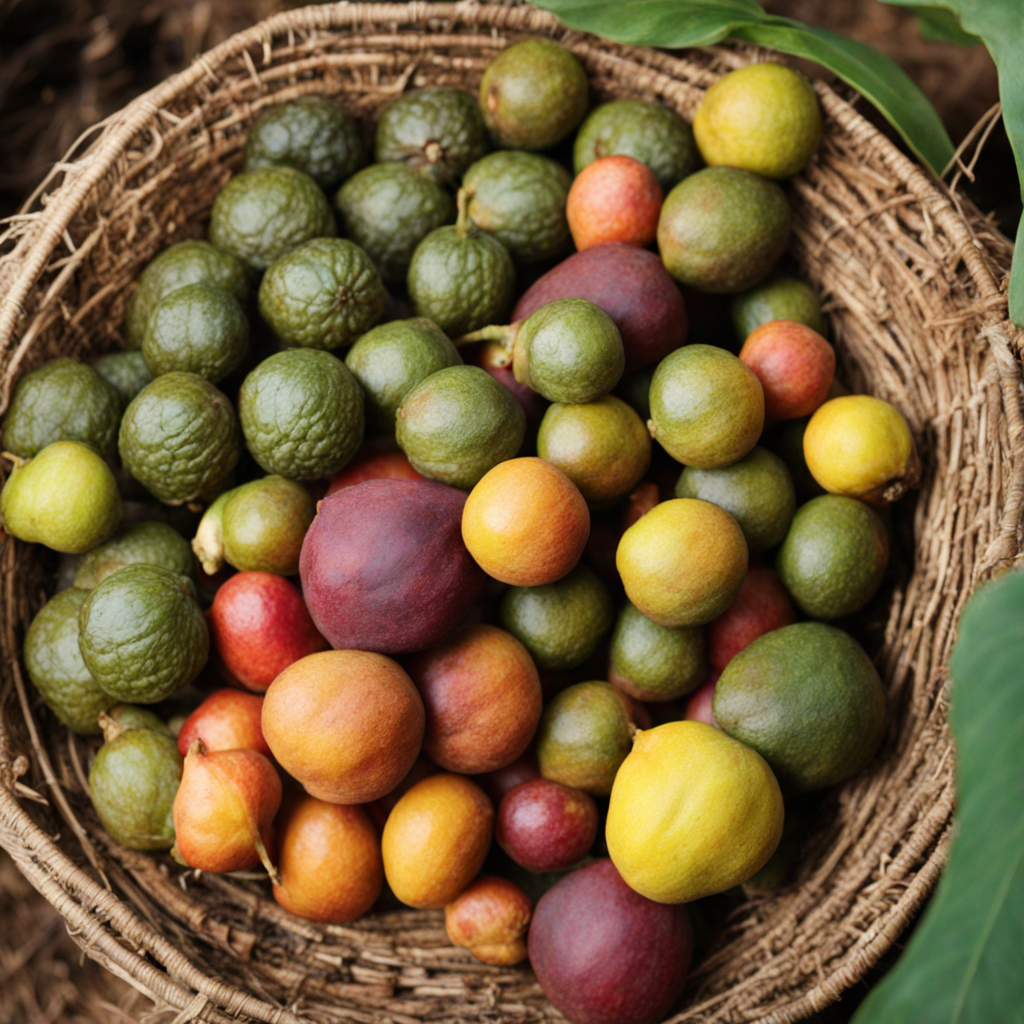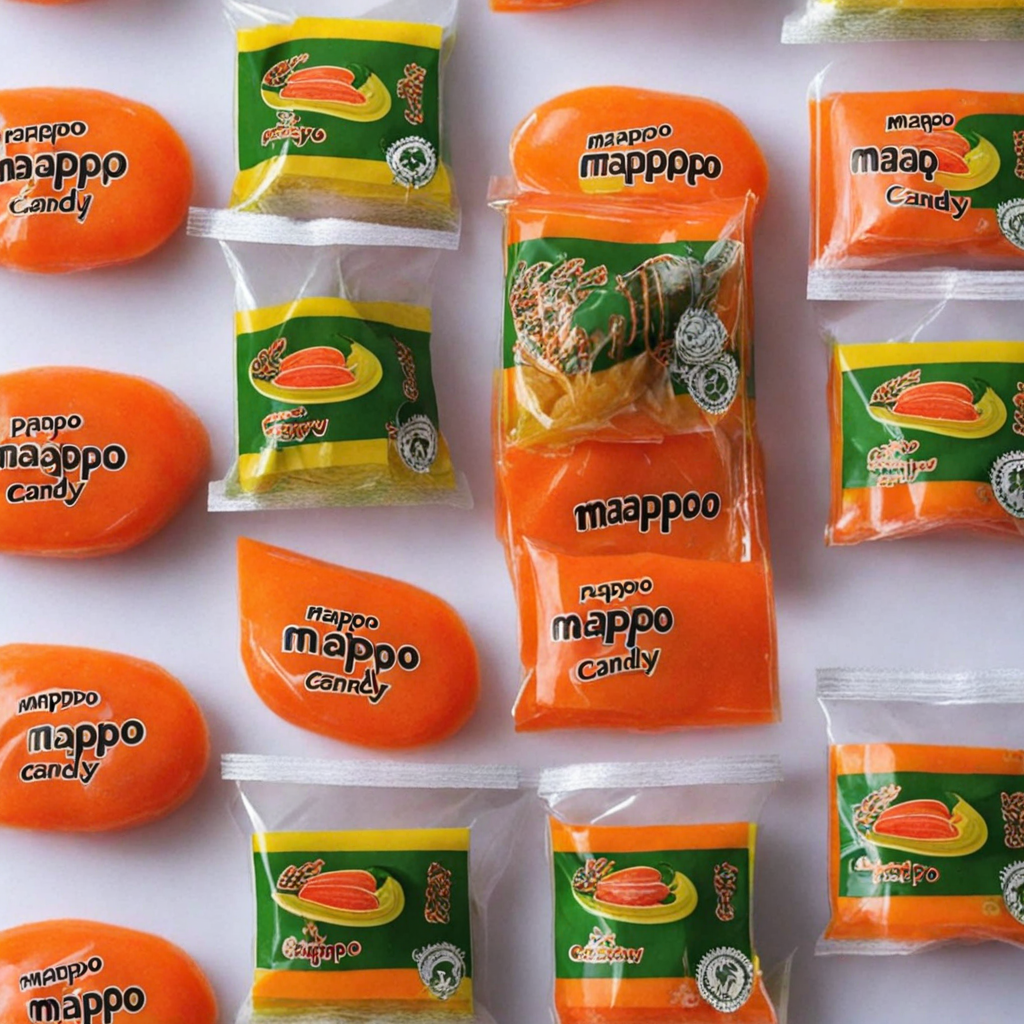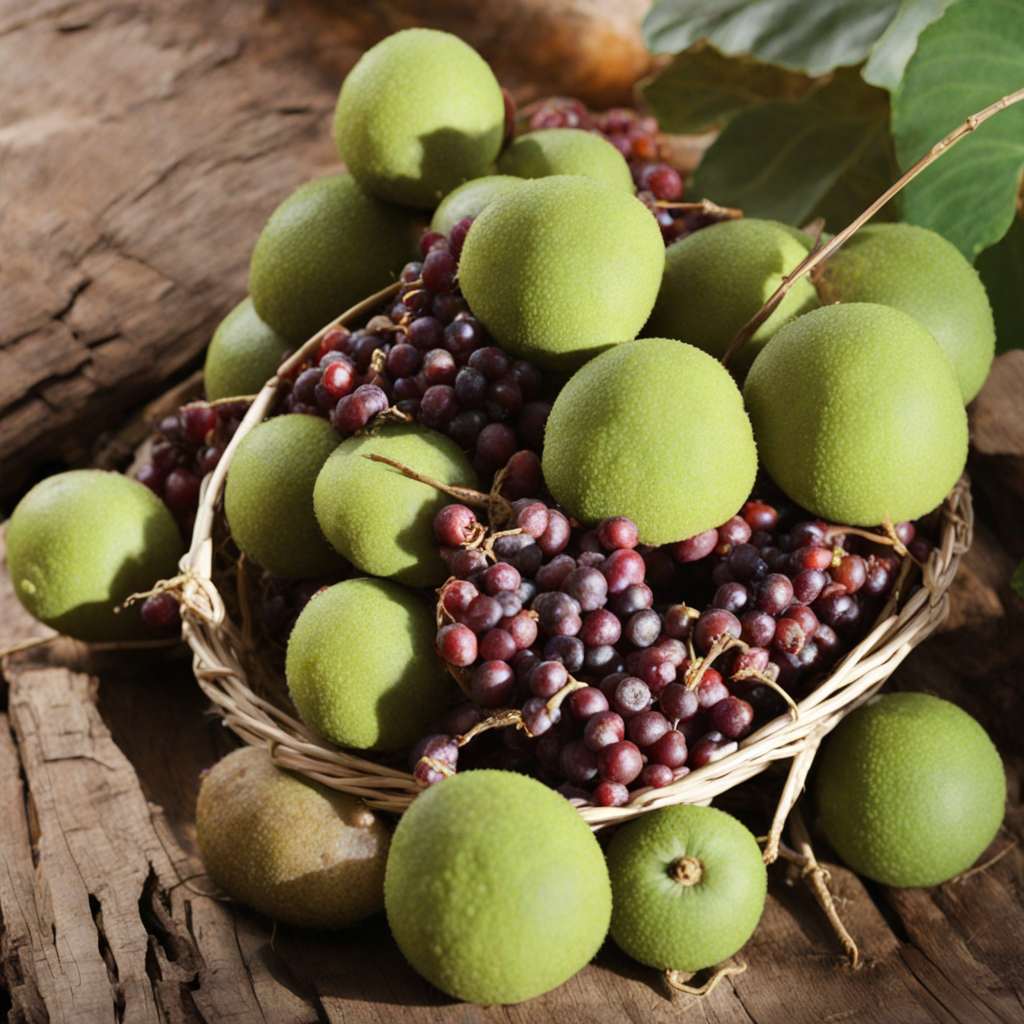Maguru
Maguru, a traditional Zimbabwean dish, is a unique culinary delight that showcases the rich flavors of the region. Often made from the intestines of various animals, especially goat or cow, Maguru is carefully cleaned and prepared to create a dish that is both hearty and satisfying. The intestines are typically boiled until tender, then seasoned with a blend of local spices, herbs, and sometimes vegetables, which enhances the natural flavors of the meat. This dish is a true representation of Zimbabwe's resourcefulness, transforming offal into a delicacy that is cherished by many. The preparation of Maguru varies from household to household, reflecting personal and regional preferences. Some may add a smoky flavor by grilling or pan-frying the intestines, while others might opt for a stew-like consistency, simmering it with a rich sauce made from tomatoes, onions, and spices. Accompaniments such as sadza (a staple maize porridge) or leafy greens complement the dish perfectly, providing a balance of flavors and textures. The richness of the dish makes it a popular choice for gatherings and celebrations, where it is enjoyed communally, fostering a sense of togetherness among family and friends. For those adventurous enough to explore new tastes, Maguru offers a culinary experience that is both intriguing and rewarding. The dish invites you to savor the deep, savory notes that emerge from the slow-cooked intestines, harmonized with the aromatic spices that define Zimbabwean cuisine. Each bite is a testament to the cultural heritage of the region, making Maguru not just a meal, but a journey into the heart of Zimbabwe's food traditions.
How It Became This Dish
The History of Maguru: A Culinary Treasure of Zimbabwe Origins Maguru, also known as "the intestines" of the cow in the Shona language, is a traditional Zimbabwean dish with deep roots in the country's agrarian and pastoral lifestyles. This delicacy is made from the intestines of cattle, which are cleaned, cooked, and often spiced to create a flavorful, hearty meal. The origins of Maguru can be traced back to the traditional practices of the indigenous peoples of Zimbabwe, particularly the Shona and Ndebele communities, who have relied on livestock, especially cattle, as a source of sustenance, status, and cultural identity for centuries. The domestication of cattle in Southern Africa dates back thousands of years, with evidence suggesting that the earliest pastoralists migrated into the region around 2000 BCE. Cattle became integral not only to the diet but also to the social fabric of these communities. They were seen as symbols of wealth and were often used in ceremonial contexts, including the ritualistic slaughter during important events such as weddings, funerals, and rites of passage. The consumption of every part of the animal, including the less desirable organs like intestines, reflects a deep respect for the animal and a commitment to minimizing waste. Cultural Significance Maguru holds a significant place in Zimbabwean culture, embodying the values of resourcefulness and respect for nature. In traditional settings, it is often prepared during communal gatherings or family feasts, reinforcing social ties and cultural heritage. The dish is typically served with sadza (a porridge made from maize), which is a staple food in Zimbabwe. The combination of Maguru and sadza not only provides a balanced meal but also symbolizes the sharing of resources within a community. In addition to its nutritional value, Maguru carries cultural symbolism. In many Zimbabwean communities, eating Maguru is seen as a rite of passage, especially for young boys, who are often introduced to this dish as part of their transition into manhood. The preparation and sharing of Maguru can serve as a way to foster bonds between generations, with older family members passing down culinary techniques and stories associated with this traditional food. Moreover, Maguru is often associated with traditional healing practices. In some cultures, it is believed that certain parts of the animal, including the intestines, possess medicinal properties. They are thought to help with digestion and are sometimes used in traditional remedies for various ailments, further enhancing the dish's significance beyond mere sustenance. Development Over Time As Zimbabwe's socio-political landscape has evolved, so too has the preparation and consumption of Maguru. The colonial period introduced new agricultural practices and food systems that began to alter traditional diets. With the influx of Western foods and cooking methods, many indigenous dishes, including Maguru, faced challenges in maintaining their prominence. However, the resurgence of interest in traditional foods in recent decades has reinvigorated the appreciation for Maguru. The post-independence era of the 1980s saw a cultural renaissance in Zimbabwe, where there was a renewed emphasis on celebrating indigenous heritage. This was reflected in the culinary scene, with many Zimbabweans seeking to reconnect with their roots. Traditional dishes like Maguru began to gain recognition in urban centers, where they were celebrated not only for their flavors but also for their cultural significance. Street vendors and local eateries started to offer Maguru alongside other traditional dishes, making it accessible to a wider audience. In recent years, the globalization of food culture has further influenced the way Maguru is perceived and consumed. The growing trend of "slow food" movements and the emphasis on local and sustainable eating have led to a revival of interest in traditional dishes. Many chefs and home cooks are now experimenting with Maguru, incorporating modern culinary techniques while still honoring its traditional roots. This fusion of old and new has allowed Maguru to evolve while retaining its cultural integrity. Modern Interpretations and Global Recognition Today, Maguru is not only a beloved dish in Zimbabwe but has also begun to attract attention beyond its borders. As Zimbabwean communities migrate and establish themselves around the world, they bring their culinary traditions with them. Maguru has found its way into diaspora communities, where it is served at cultural gatherings, celebrations, and restaurants that aim to provide an authentic taste of home. In addition, international food festivals and culinary showcases have introduced Maguru to a broader audience. Food enthusiasts and chefs are increasingly interested in exploring African cuisines, leading to a growing appreciation for traditional dishes like Maguru. This newfound recognition is helping to elevate the status of Zimbabwean cuisine on the global culinary map. Furthermore, social media has played a significant role in this culinary renaissance. Platforms like Instagram and TikTok allow home cooks and chefs to share their recipes and cooking experiences, showcasing the beauty and richness of Zimbabwean food culture. Videos and photos of Maguru being prepared and enjoyed have garnered interest and inspired many to try their hand at this traditional dish. Conclusion Maguru is more than just a dish; it is a reflection of Zimbabwe's rich cultural heritage and culinary traditions. Its origins rooted in the agricultural practices of ancient communities, cultural significance as a symbol of unity and tradition, and its evolution in the face of modern challenges highlight the resilience of Zimbabwean cuisine. As the world continues to embrace diverse culinary practices, Maguru stands as a testament to the importance of preserving and celebrating traditional foods. Its journey from the past to the present and its potential for future innovation ensure that this unique dish will remain a cherished part of Zimbabwean culture for generations to come. Through Maguru, we not only taste the flavors of Zimbabwe but also experience a deep connection to its history, values, and community spirit.
You may like
Discover local flavors from Zimbabwe


